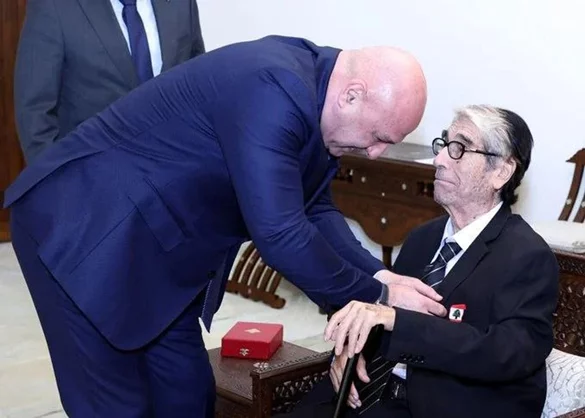In recent years, increasing threats of radiation exposure and nuclear disasters have become a significant concern for countries worldwide. Catastrophic events such as the 1986 Chernobyl nuclear plant accident in Ukraine and more recently the 2011 Fukushima Japan earthquake induced nuclear reactors disaster resulted in thousands of people being exposed to high levels of radiation and ultimately their death. To date, there are no available measures to mitigate the effects of radiation post-exposure and prevent mortality.
Three years ago, 32-year old Dr. Carla Kantara, started working on developing a drug that could potentially save thousands of lives. The importance of her research work was recognized by the United States who granted a green card based on her extraordinary ability in sciences.
A native of Lebanon, Dr. Kantara is also a former NCAA women's basketball player and Lebanese National women's basketball player. She completed her undergraduate studies in biology and chemistry at Converse College in South Carolina and received her Ph.D. from the University of Texas Medical Branch (UTMB) in Biomedical Sciences with a focus on stem cell and cancer research.
During her postdoctoral research training, Dr. Kantara started working on a drug called TP508, also known as Chrysalin. An investigational 23 amino acid peptide drug discovered by Dr. Darrell Carney over 20 years ago, it was originally developed for use in stimulating repair of dermal and musculoskeletal tissues. Based on the therapeutic effects of this drug, Dr. Carney started a privately held biopharmaceutical development company based in Texas, currently funded by a $3 million grant from the National Institute of Allergy and Infectious Diseases (NIAID) organization under the umbrella of the National Institute of Health (NIH).
A drug that buys you time
In 2012, Dr. Kantara discovered that a single injection of this drug, up to 28hrs post-radiation exposure, significantly increased animal survival and delayed the onset of mortality. The drug was shown to work by increasing stem cell proliferation in the gastrointestinal (GI) system to prevent breakdown of the intestinal mucosa and decrease ionizing radiation-induced mortality.
"The drug can be easily distributed for on-site self-administration. Syringes in the form of Epipens could be delivered by helicopter or airplane drop off to people who can inject themselves with the drug, (...) giving them enough time to reach a hospital for more advance treatment," says Dr. Kantara. But what if you've been exposed for more than 28 hours, would the drug still work? According to Dr. Kantara, while they have not tested the drug for longer periods than 28hrs, it is inevitable that the longer one waits to administer, the lesser their chances of survival. She stresses that this drug is not a cure for radiation exposure and that exposed individuals will still require medical care; "in essence, it buys you time, especially if no one can get to you".
When asked about the efficiency of the drug in reducing mortality, Dr. Kantara explained that it depends on the amount of radiation exposure that an individual receives. If exposed to 8 Gray (Gy) - a radiation unit defined as the absorption of one joule of radiation energy by one kilogram of matter - the bone marrow is affected; if exposed to 9Gy the gastrointestinal system becomes affected and at doses of 20Gy or more, the brain is affected. In animal studies, the drug did not increase survival when mice were exposed to radiation doses more than 10Gy. "To put things into perspective, if you're shot once or twice, your chance of survival are significantly higher than if you're shot 100 times, the same concept applies to the efficiency of our drug," adds Dr. Kantara.
Based largely on her contributions, these findings were published in scientific journals in 2015 and the drug is now being tested at Medical Countermeasures Against Radiological Threats (MCART) and the Armed Forces Radiation Research Institute in Washington DC.
And it can also be used for brain cancer treatment
More recently, Dr. Kantara discovered that TP508 stimulated neural stem cell growth post-radiation therapy. By demonstrating its ability to protect brain stem cells from radiation, she opened the possibility for this drug to be used in children and adults to prevent radiation damage that causes irreversible brain damage when being treated for medulloblastoma cancers, for example. According to Dr. Kantara "97 percent of children become cognitively impaired after radiation therapy, most of which never recover from the damage".
While trying to determine whether the drug would protect cancer stem cells, Dr. Kantara discovered that it sensitizes cancer stem cells to radiation and shrunk tumor size in mice brains. In 2013, the National Cancer Institute granted Chrysalis BioTherapeutics a $1.5 million contract to develop this drug.
Chrysalis BioTherapeutics is currently in talks with investors to help take the drug to the next level. Dr. Kantara cautioned that in general it takes an average of $1.3 billion and about 20 years to put a drug on the market. When asked about the chances of raising funds for this drug, Kantara explained that it is easier to get market approval for drugs that target diseases that are rare such as medulloblastomas. "This is done to encourage the development of drugs for rare diseases which are usually not of huge interest for pharmaceutical and biotechnology companies since these drugs would not generate large profit margins" says Kantara. "Obviously, this is sad to hear, but it's the reality of things (...) no one is in the business of losing money".
Once a drug is on the market for a specific indication and shown to be safe, it becomes easier to develop it for other indications. Dr Kantara's long-term goal is to assess whether the drug can also be used to treat other diseases, specifically neurodegenerative diseases such as ALS and Alzheimer's.
technologyreview

























